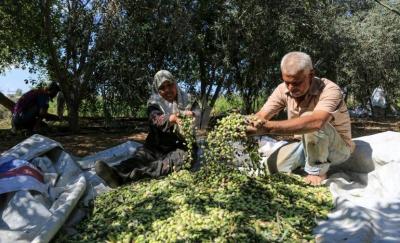The olive season has begun in the south, while residents of Mount Lebanon and the north are preparing for the pressing season. In Lebanon, which is witnessing the worst economic crisis and a significant rise in prices, olive trees occupy about 563 square kilometers of land, representing 5.4 percent of Lebanese territory or 8 percent of the total agricultural land in Lebanon. What is the fate of farmers this year?
Mohamed Abu Zayd, Director of Plant Wealth at the Ministry of Agriculture, pointed out in an interview with mtv that "labor costs vary by region. In some places, workers receive 50 percent of the production while the farmer takes the other half. There are areas where workers receive varying wages based on regional conditions. In areas with an abundance of labor, locals can dictate wages, while in regions where foreign labor is scarce, they set the price they want."
Abu Zayd confirmed that "Lebanese olive oil is primarily sold locally and is often marketed immediately after pressing," noting that "demand for olive oil exists despite the crisis."
Regarding production costs, the owner of an olive oil press in Mount Lebanon informed mtv that "one barrel of oil requires about 80 kilograms of olives, and the price per kilogram of olives designated for pressing is 25,000 Lebanese lira, which totals around 2 million lira. The price for a gallon is 100,000 lira, the press rental is 500,000 lira, and the daily wage for a worker is 400,000 lira." Thus, the average price for a barrel of olive oil is 100 US dollars.
According to the "IDAL" website, approximately 70 percent of olive trees are intended for oil production, while the remainder is for table olives. The olive oil yield in Lebanon ranges from 18 to 25 percent. About 41 percent of olive oil production occurs in northern Lebanon, followed by the Nabatieh region at 21 percent of total production, 15 percent in the south, 13 percent in Bekaa, and 10 percent in Mount Lebanon. In 2015, olive oil production reached 21,000 tons.




